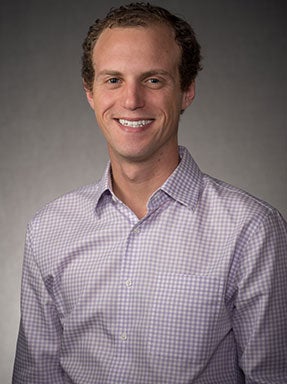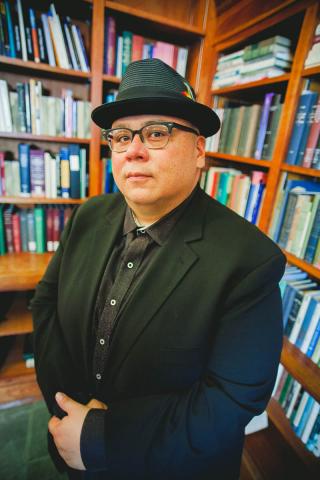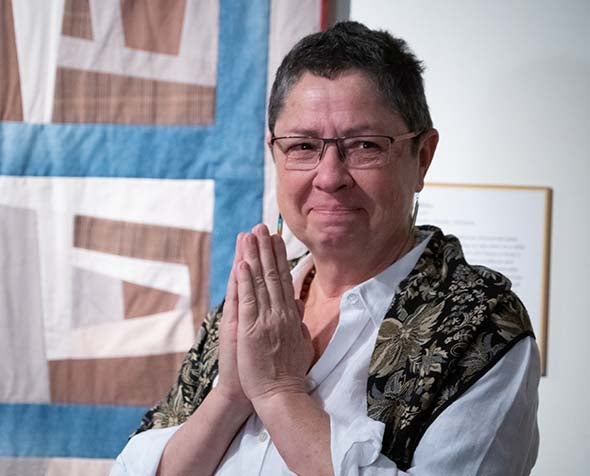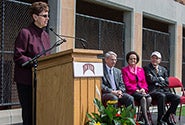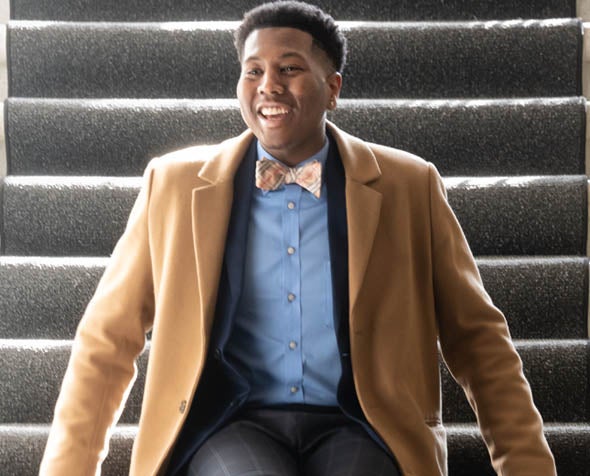Celebrating Latinx Heritage Month With Johnny Ramirez
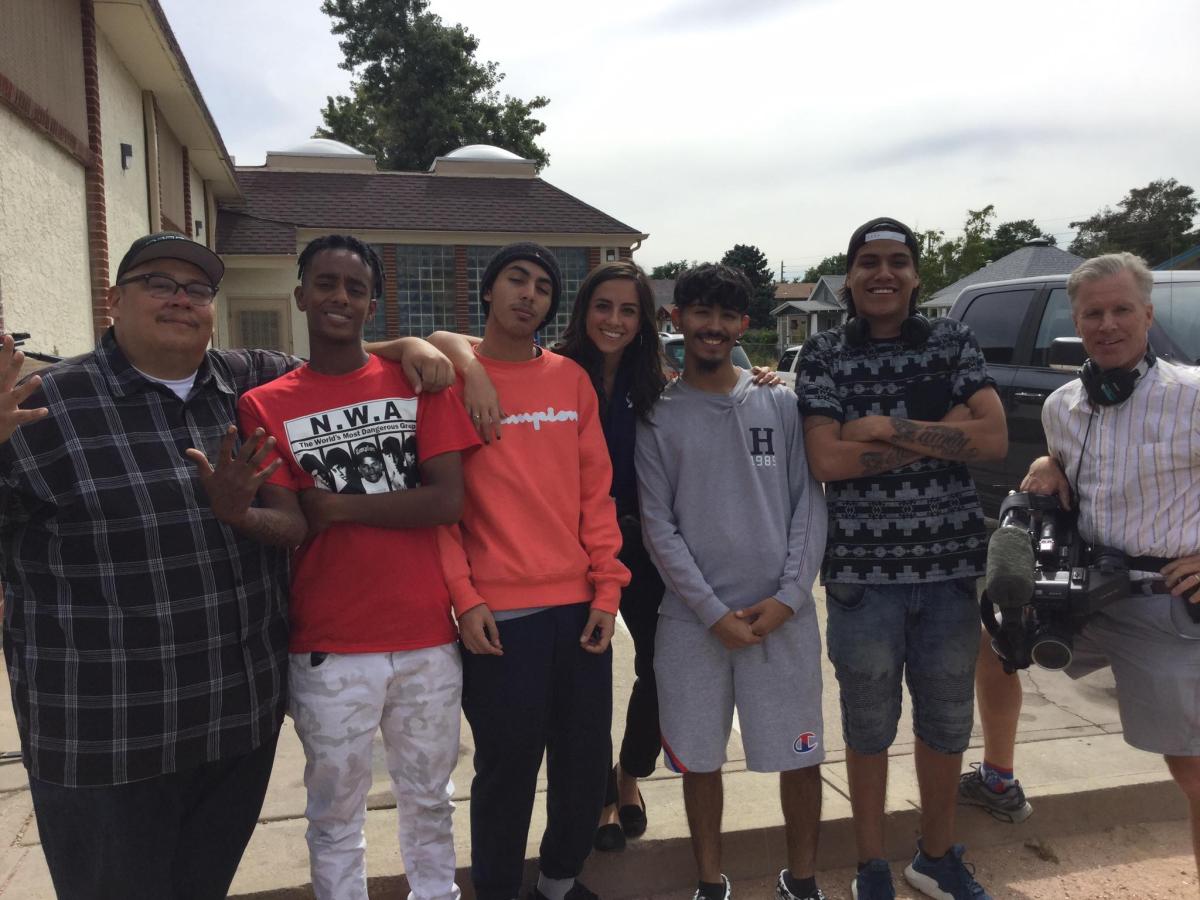
Johnny Ramirez, left, with members of the GRASP team.
The University of Denver is committed to living our values of diversity and inclusion. We recognize that our community and institutional success is dependent on how well we engage and embrace the rich diversity of our faculty, staff, administrators, students and alumni. With that shared value in mind, throughout this academic year, we plan to publish a series of articles to celebrate cultural and ethnic heritage months. In partnership with Human Resources & Inclusive Community and the Staff of Color Association (SOCA), we will feature a staff or faculty member and a student in recognition of each heritage month, along with an event to honor one another and learn about our unique differences.
When Johnny Ramirez stepped on the University of Denver campus three years ago, it was the first time he had really spent time at a private institution of higher education. With a recently completed PhD in his pocket, Ramirez moved to Colorado to pursue a postdoctoral fellowship at the Interdisciplinary Research Institute for the Study of (in)Equality (IRISE).
“It was initially like, ‘Whoa, I’m in a different space now where I’m seeing a white majority, from faculty to students,’” Ramirez remembers. “As much as it was kind of an initial culture shock, what brought me into the community and feeling that I could hit the ground running and start building with folks was IRISE.”
IRISE and its partners across campus welcomed Ramirez and supported his work with the Gang Rescue and Support Project (GRASP), which supports youth who are in gangs or at-risk of gang involvement, while helping families of gang victims.
Working in the community and collaborating with students and faculty of all races helped Ramirez feel at home at DU, where he is now a visiting teaching assistant professor. In celebration of Latinx Heritage Month, Ramirez spoke to the DU Newsroom about his upbringing and how it has influenced his work in higher education and the community at large.
Can you tell us about your heritage and what it means to you?
When I introduce myself, I say I’m a third-generation Chicano, meaning that my great-grandparents were born in Mexico, but my grandparents, my parents and I were born in the U.S. The word “Chicano” or “Chicanx” is a political identity. The Mexican-American community during the ’60s and ’70s really exercised its voice and demand for civil rights. It comes from this complex negotiation of two identities rooted in colonialism and colonization. When you embrace the Mexican identity, you’re recognizing that you have a heritage that comes from Spain and Europe, but that you’re also part Indigenous. They call that a “mestizaje,” a mixing. Then you factor in the next identity, which is being American, or U.S. born. We know that that gets contentious because in this country, within the constraints and agenda of white supremacy, to claim full American citizenship is kind of racial code talk for being white. So no matter how much [my family might be] born in the United States for many generations, there’s still a part of me — maybe because of my Spanish surname — that I’m still going to be questioned: Do I have full American citizenship?
There’s always this tension of what it is to be “American.” The standard is white, Anglo-Saxon, Protestant, English-speaking, able-bodied, it goes across the board. For me that was an identity that, as a young person, I think I was really searching, like, “Who am I?” And I think I needed that identity of being Chicano because there’s always that feeling of being third generation.
When I identify as part of the Chicanx community, the x is to take that step toward incorporating and embracing the LGBTQIA community, pushing for the break in that binary [of “Chicano” for men and “Chicana” for women]. As a community organizer and an activist, I’m going to be more inclusive and start to bring in those voices and identities that were historically marginalized and are marginalized today.
How has your heritage steered your interests and research?
I was about 14 years old when I was introduced to the Chicanx movement of the 1960s and ’70s. I struggled with the racism I experienced [in Los Angeles]: being made to feel like the problem, being labeled as a troubled youth, when in reality it was a lot of the adults (counselors, teachers) that were there. No one reached out and asked what was going on at home, what it was like to be raised by a single parent on welfare, on public assistance, in Section 8 [housing], in a community where the median income is $235,000. As a young person you don’t have the lenses or language to articulate it, but you feel that something is wrong.
We moved inland, away from LA, and ended up in more of a low-income, working-class community. I reentered a continuation school, where I saw a flyer for this student activist group called MEChA (Movimiento Estudiantil Chicano de Aztlan). It was a group of Chicano/Chicana youth that organized itself to push our K-12 and higher education to start to create courses and [a] curriculum that honor the cultural heritage and history and experience of Chicanos and Chicanas in the United States.
At the core their message was fighting so we can have access to higher education. Our role as youth in the community was to go into higher education, get that knowledge, get that information — whether it’s being a lawyer, a teacher, a businessperson, an urban planner — get your degree and then come back to your community and build. It’s a deepened sense of purpose.
Now, the community is the focus of your work. Tell us about what you do with GRASP and IRISE?
I think GRASP is definitely on the forefront of re-centering youth intervention work around using Indigenous healing center methods. For the last two years I’ve done a lot of participant observations, and I sit in their weekly youth healing circles. Based on Indigenous ancestral teachings from the local Denver area and beyond, it’s circling up the young folks and letting them know that there’s a way to acknowledge gifts and the blessings you have in your life while acknowledging the knots. In those circles, it’s about young people having the courage and feeling like I need to be in this space to feel supported because I need to start loosening these knots. I need to start addressing or naming the things I’ve experienced.
Some young men are on probation; some have been impacted by gangs and are gang-affiliated or gang-active. But at the core of it, we know when working with our young folks that that’s coming from a place of pain, a place of trauma and a place of hurt. A lot of times what would make a young person lash out is when a young person is starting to lose hope. But we also know young people can harness a bit of that energy and that initial pushback and focus it in a way where it can have a critique of social oppression and it can have a motivation for social justice. It can be a form of transformational resistance.
The tagline at IRISE is “working towards racial justice through research, scholarship and creative work.” In an age of protests and marches, what makes research and scholarship valuable tactics for bringing about change?
I see it as a tool. Traditionally in academia, research gets written in these academic journals, written in a discourse that isn’t engaging for communities, and gets put in these journals that you either have to pay for or have a login to get in. But at the same time, when you’re a community organizer and you’re part of these grassroots movements, you’re constantly researching and getting data and analyzing it to influence the next step of your strategy.
We pass on those tools to young people on how to understand their community and those injustices. Because once you start to put all that information and data and build that case, you’re also being a part of building that movement. When you take youth community members and they do a whole project around an issue, I’ve seen so much transformative change happen from the process of research.
Maybe the system isn’t completely transforming or coming down, but that process of pedagogy, of teaching our young people community research then becomes a powerful tool in their development. Now they see themselves as leaders, they have a voice, they’ve been exposed to some tools and way more knowledge, history and information that they had even before they understood there was injustice in their communities.
In an effort to make DU an inclusive and welcoming place, what would you like to see changed or improved?
I wouldn’t be where I am without having some type of connection to ethnic studies. If DU could make a full-on commitment to say in the next five years, or hopefully sooner, they’re going to build a department and the department will have a critical white studies scholar, an increased number of Black studies scholars, Native studies scholars, Chicanx studies scholars, Asian-American studies scholars. By building that, you’ll have the department doing more diversity and inclusion programs on campus; you’ll have a bunch of students now that have the language and have these lenses, they’re starting to unpack some of that stuff; and then they’ll want to do clubs and organizations on campus, and they’ll want to start to get active. So I think there could be a positive ripple effect by investing in that. Once you put that space there and fund it and resource it, once the students come in, you’re going to see some transformative outcomes.








